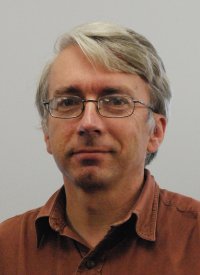Life Before MOAC
Looking back, I think I have always been an engineer, but it is only since starting the MOAC course that I have come to appreciate the distinct perspective that is provided by taking an engineering view of systems, from complex telecommunications networks to protein interactions within cells.
One amoung many early signs of my interest in engineering was my love of Lego, which included building a lego suspension bridge with a 5 foot centre span (Built in a pre-metric era).
I read Engineering at Cambridge, which included everything from control systems to thermodynamics, to quantum theory, to structures, to digital and analogue circuit design. It has been fascinating to see how elements from many of these topics have cropped up again in the MOAC MSc modules. Sometimes they were slightly disguised, such as the parallels between engineering control systems and enzyme kinematics, sometimes the MOAC lectures were a direct mirror of the lectures many years earlier.
After completing my engineering degree at Cambridge I then went to the BT research centre at Martlesham Heath where I soon became involved in the early development work on the System X telephone exchange.
When the work was transferred out of British Telecom I moved with it, working for Plessey near Maidenhead. One of my projects was the design of the analogue and digital circuitry on an Integrated Circuit that was built by Plessey Semiconductors.
I then moved with Plessey to Liverpool, and finally in Coventry, continuing to work on System X and its successors. The company had by this time evolved into Marconi, which was bought by Ericsson, and in early 2007 I took the offer of voluntary redundancy in order to do 'something completely different', and ended up in MOAC.
Except that in some ways this was not completely different...
Soon after leaving university, I came across a picture of centriole, a cellular organelle. I immediately felt that its remarkable and enigmatic structure had little to do with biology, and a lot to do with with physics and engineering. This led in time to an interest in the way that vibrational modes within proteins might be linked to ways in which parts of the cell communicate with each other.
As I pursued this interest, I found myself bringing telecoms and engineering principles into my attempts to understand a little more about how cells work. One person I encountered early on, and whose ideas continue to fascinate and inspire me is Professor Herbert Fröhlich .
In the 1960’s Professor Fröhlich suggested that the way that proteins vibrate might be the key to understanding some of the ways that proteins interact, and might ultimately be the key to understanding some of the ‘big’ questions within biology, including possibly consciousness itself.
The progress of Fröhlich’s ideas has been slow, mainly because of the difficulty of doing experiments in this area. In 1999 I made contact with a company, Vermont Photonics in
Since the 1960’s many groups have looked at the possibility that there might be something in Fröhlich’s ideas. Many of these are on the ‘fringes’ of the orthodox scientific community, and I have made contact and visited a number of these groups to find out more about what they are doing.
Examples include:
-
The International Institute of Biophysics at Neuss near Dusseldorf, Germany, who have been looking at low level photon emission from living organisms, and effect first discovered in the 1930’s but is still not understood. I have attended the IIB conference in Neuss in 2000 and the summer school in 2001, where I can be seen third from the right on the back lne of the group photo. I am still convinced (along with others) that biophotons might be one of the few windows that we currently have to the mechanisms that Fröhlich proposed.
-
The Energy Localisation And Transfer in Crystals, Biomolecules And Josephson Arrays conference in Feb 2003 in Les Houches
-
A paper presented at the 1st Annual conference on the Physics, Biology and Chemistry of Water
In each case, the difficulty is identifying which are the credible cientific results that have been obtained within these groups, and the credible hypothesis that are being developed.

